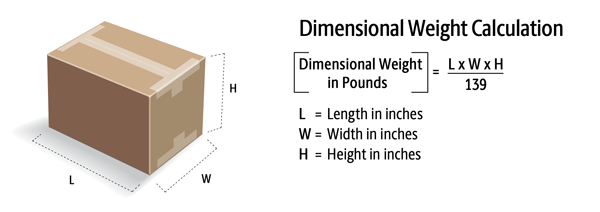What is dimensional weight?
Learn about dimensional weight and how it can be affecting what you are being billed for shipping.
Parcel carriers like FedEx, UPS and Purolator, charge for shipments based on billable weight. They define billable weight as the greater of actual or dimensional weight. Actual weight is the weight of the package rounded up to the next whole pound. A package's dimensional weight is determined by multiplying its length, width and height (round each measurement up to the next whole inch) and dividing it by 139. Round the result up to the next whole number to arrive at the dimensional weight in pounds.
Illustration from the 2020 UPS Rate and Service Guide

Assume a package has dimensions of 10 x 8 x 6 inches. It's dimensional weight would be 4 LBS (= 10 x 8 x 6 / 139 rounded up to the nearest integer). If the package's actual weight is 2 LBS, the parcel carrier will identify the billable weight of the package as 4 LBS.
Merchants using real-time rating engines that rely solely on actual weight risk under recovering the cost of shipping during the checkout process. The variance can be substantial and merchants are better served by implementing a solution that is capable of properly identifying the billable weight of a package.